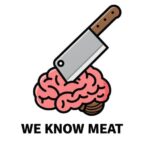Introduction to Flat Cut
The flat cut (sometimes referred to as the flat brisket cut) is a delicious, lean cut of beef that comes from the brisket. Known for its rich flavor and tenderness when cooked properly, the flat cut is a versatile choice for a variety of dishes, from hearty roasts to mouthwatering sandwiches. While it’s often associated with slow-cooking methods, its ability to absorb flavors and remain tender makes it a favorite in both professional kitchens and home cooking. Here’s everything you need to know about the flat cut.
History of Flat Cut
The flat cut of brisket is taken from the brisket primal, located on the lower chest of the cow. Brisket has long been a prized cut, especially for slow-cooking, and the flat cut is known for being leaner than its counterpart, the point cut, which has more fat and marbling.
Brisket as a whole has been a staple in cuisines around the world, from American barbecue to Jewish deli fare. The flat cut, in particular, gained popularity for its ability to cook evenly, making it the ideal choice for dishes like corned beef or smoked brisket. It’s a favorite among those who enjoy the full brisket flavor with a leaner profile.
What Type of Meat is the Flat Cut?
The flat cut comes from the brisket section, which is a tougher cut due to the significant amount of muscle used by the cow. The flat cut is prized for its leaner texture compared to the more marbled point cut, making it a good option for those who want a lower-fat version of brisket without sacrificing flavor.
This cut is typically rectangular and flat, with a thin layer of fat on one side that helps maintain moisture during cooking. It’s often braised, roasted, or smoked to bring out its natural tenderness. When cooked properly, the flat cut becomes juicy and flavorful, perfect for slicing thinly against the grain.
Popular Recipes Featuring Flat Cut
1. Smoked Brisket Flat Cut
Smoked flat cut brisket is a classic BBQ dish. Seasoned with a simple rub of salt, pepper, and garlic powder, then slow-smoked for hours, this cut of brisket develops a rich, smoky flavor. It’s perfect for slicing thin and serving with your favorite barbecue sides.
Classic BBQ favorite: Smoked Brisket Flat Cut
2. Corned Beef
The flat cut is a popular choice for making corned beef. After being brined for several days in a mixture of salt, sugar, and spices, it’s slowly simmered until tender and then sliced thinly. Corned beef is often served with cabbage or made into a hearty sandwich.
Irish-inspired dish: Classic Corned Beef with Cabbage
3. Braised Flat Cut Brisket
Braising the flat cut in a rich broth with aromatics like onions, garlic, and herbs results in a melt-in-your-mouth dish. This slow-cooking method breaks down the tough fibers of the meat, making it incredibly tender and full of flavor.
Hearty comfort food: Braised Flat Cut Brisket with Root Vegetables
How to Choose and Store Flat Cut
When selecting a flat cut brisket:
- Look for a nice layer of fat on one side—this will help keep the meat moist during cooking.
- The meat should be a deep red color with some visible marbling, though it’s leaner than the point cut.
- It should feel firm to the touch, and there shouldn’t be any discoloration or unpleasant odor.
Storage tips:
- Keep fresh flat cut brisket refrigerated and use it within 3–4 days.
- For longer storage, wrap the brisket in plastic wrap and freeze it for up to 6 months.
- If you’re making corned beef, the brine can help preserve the meat while it marinates in the refrigerator for several days.
Conclusion
The flat cut is a lean and flavorful option for anyone looking to enjoy the richness of brisket without the higher fat content. Whether you’re preparing a tender smoked brisket, making a hearty corned beef, or braising it for a comforting meal, the flat cut delivers a versatile and delicious result.
Next time you’re craving a satisfying, flavorful beef dish, consider the flat cut of brisket—it’s sure to become a go-to in your kitchen.
